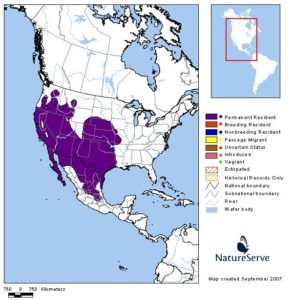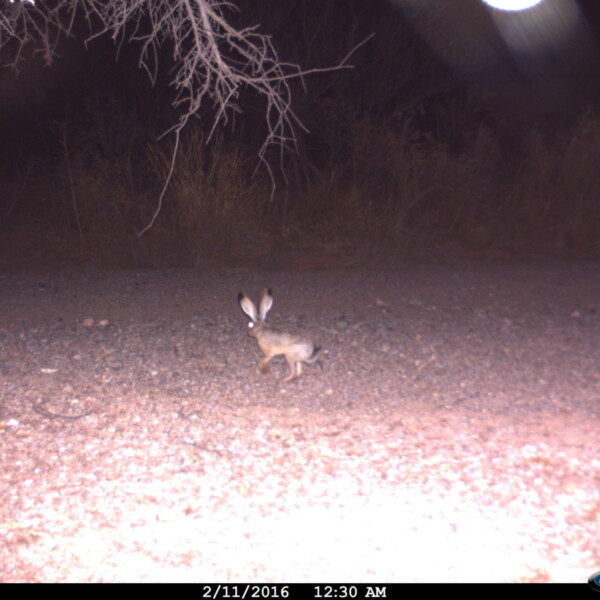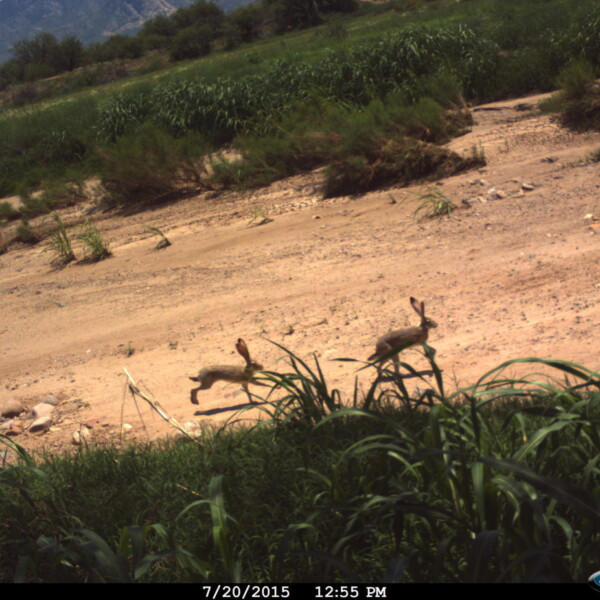Last week we highlighted the antelope jackrabbit (Lepus alleni). This week we will cover the other Lepus species that we get on our cameras, the Black-tailed jackrabbit (Lepus californicus).
You can find the black-tailed jackrabbit in low-elevation deserts and scrub lands across the west. They range from Missouri in the east, to the California coasts in the west. The northern part of their range extends into Washington and Idaho, and south into central Mexico.
The black tails are tall and lean averaging around 5 lbs., with large ears that help deal with the heat. The black-tailed jackrabbit is a soft gray-brown color with black tail with a stripe running up their back. The most distinguishing feature we use at SIA to ID these hares are their black tipped ears. Read our previous creature feature for the antelope jackrabbit to learn what their distinguishing features are. One note, both hares have black tails. So, don’t base your ID just on that!
Jackrabbits are herbivorous and eat grass, forbs, and even woody material. Like many desert species, the black tailed jackrabbit obtains most of its water from the plants they eat. In the desert they get their water from the fleshy cactus.
While not actually a rabbit, the phrase ‘breeds likes rabbits’ definitely applies to these hares. When their populations get too high they are often considered agricultural pests. This is because of how much grass and vegetation they can consume. Ironically, this problem was created by humans when we removed all the jackrabbit’s predators. Today there are considered Least Concern according to the IUCN red list. However, like most species, the black-tailed jackrabbit still at risk from habitat destruction and fragmentation.
Keep habitat open for the jackrabbits today:
You can help Sky Island Alliance maintain an open corridor between the United States and Mexico for the black-tailed jackrabbit and the countless other species by donating today. Your continued dedication and support are vital to keep our scientists and volunteers on the ground and able to collect the data we need to fight the wall.
Sources:




